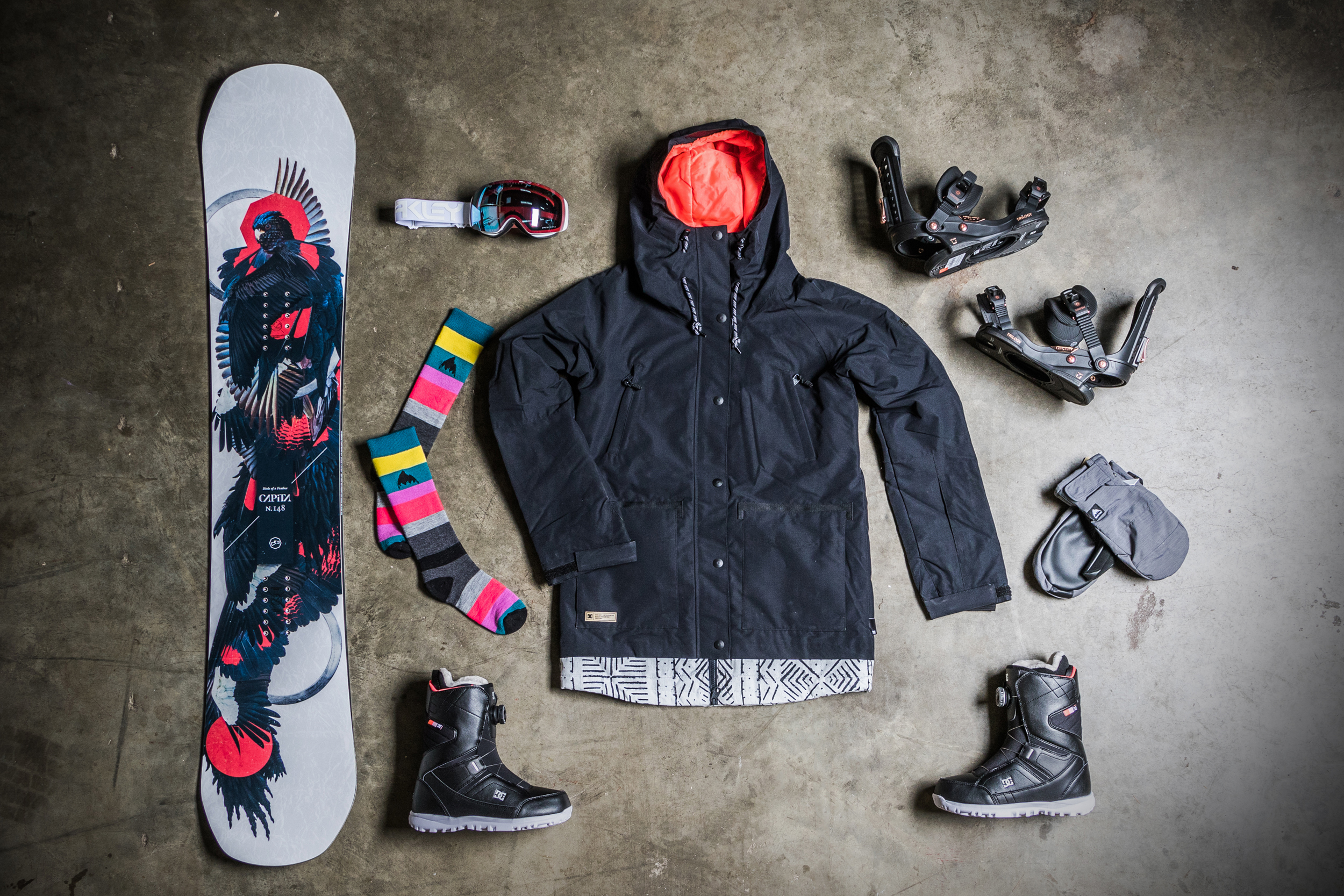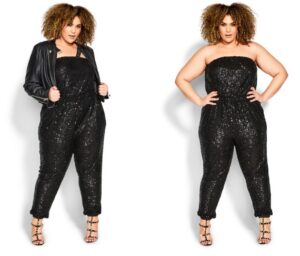To stay warm and comfortable while snowboarding, wear layers of moisture-wicking fabric and waterproof outerwear. Snowboarding is a thrilling and exciting winter sport.
It takes a lot of energy and effort to stay stable and balanced on an icy mountain slope. One of the most important aspects of snowboarding is dressing appropriately for the weather conditions. Whether you are a beginner or an experienced snowboarder, you need to wear the right clothing to protect yourself from the cold and stay dry.
In this article, we will discuss the essential winter wear for snowboarding and how you can layer them properly to maximize your comfort and performance on the slopes. Keep reading to learn more about what to wear for snowboarding.

Credit: www.the-house.com
Dressing For A Day On The Slopes
Snowboarding is an exciting sport that can be enjoyed by people of all ages, but one of the essential things to consider before heading out is how to dress for the occasion. Dressing properly for snowboarding can make the difference between an enjoyable experience or a miserable one.
When considering what to wear, it’s important to remember – layers, layers, layers.
Layers, Layers, Layers: Understanding The Importance Of Layering For Snowboarding.
Layering is a fundamental concept when it comes to dressing for winter sports such as snowboarding. Layering can keep you warm and dry and can even help regulate your body temperature. Here are a couple of key points to keep in mind when layering for snowboarding:
- Base layers should consist of moisture-wicking materials such as synthetic fabrics or wool to help keep you dry.
- Mid-layers are meant to insulate and retain heat; fleece and down are excellent materials to consider.
- Outermost layers should be waterproof and breathable to help with moisture control.
Jacket And Pants: Key Features To Look For In Snowboarding Jackets And Pants.
Investing in proper snowboarding-specific outerwear is a must. Here are some key features to consider when selecting a jacket and pants for snowboarding:
- Waterproof and breathable fabrics are essential to protect you from snow and moisture.
- Look for adjustable hoods and cuffs to customize your fit and keep snow from creeping in.
- Consider ventilation features such as zippers or mesh-lined vents to help regulate body temperature.
Gloves And Mittens: Choosing The Best Gloves For Snowboarding.
When it comes to snowboarding, gloves and mittens are vital to keeping your hands warm and dry. Here are a few things to consider when selecting gloves or mittens:
- Look for waterproof and breathable fabrics like gore-tex to keep your hands both dry and comfortable.
- Gloves or mittens with insulation help protect your hands from the cold, but without sacrificing mobility and dexterity.
- Make sure you have a secure fit to protect your wrists from the cold and keep snow from entering your gloves.
Socks And Base Layers: Optimal Materials For Staying Warm And Dry.
The right socks and base layers can help you stay warm and comfortable all day long. Here are some factors to consider:
- Look for moisture-wicking fabrics like wool or synthetic materials to keep you dry all day.
- Avoid cotton as it retains moisture and doesn’t insulate well.
- Select snowboarding-specific socks designed with padding and compression to prevent rubbing and help with circulation.
Goggles And Helmets: Protecting Your Head And Eyes From The Elements.
Keeping your head and eyes protected is imperative. Here are some key things to consider when selecting goggles or helmets:
- Look for helmets and goggles that have been certified by organizations such as astm or ce to ensure quality and protection.
- Goggles with tinted or mirrored lenses help cut down on glare and protect your eyes from uv rays.
- Make sure your helmet fits correctly, covers your ears, and has adequate ventilation to prevent overheating.
By adhering to the above guidelines for snowboarding gear, you will be able to keep yourself safe, comfortable and itch-free all day while out on the slopes. Happy shredding!
Choosing The Right Snowboard Boots And Bindings
Understanding The Difference Between Snowboard Boot Styles
Snowboard boots are an essential element in any rider’s gear. They help transmit the body’s movement into the board, and hence it is crucial to choose the correct type of boots based on your style of snowboarding. Below are the different types of snowboard boots that you should be aware of before making a purchase.
- All-mountain boots: These boots are ideal for beginners or intermediate level riders who intend to cover all types of terrain. They provide a balanced combination of support, comfort, and flexibility, which makes them suitable for all styles of riding.
- Freestyle boots: Freestyle boots are for riders who prefer a park and pipe style of snowboarding. They come with soft flex, which allows for better flexibility and maneuverability, which are essential elements of the freestyle ride.
- Freeride boots: Freeride boots are meant for riders who enjoy carving down the mountain at high speed. They are stiffer than all-mountain boots, providing greater support and response, essential for precision turns and control.
Factors To Consider When Selecting The Proper Snowboard Bindings
Bindings serve the purpose of connecting your boots to your snowboard, making them an essential part of your gear. Here are some factors to consider when selecting the proper snowboard bindings.
- Flex: The flexibility of a binding is an essential factor to consider since it determines the amount of movement and control. Soft flex is suitable for beginners and freestyle riders, while stiffer flex is ideal for freeride and advanced-level riders.
- Compatibility: Bindings need to be compatible with the board’s baseplate and boots. Ensure you purchase bindings that are compatible with both your boots and board.
- Size: Bindings come in different sizes, and it is crucial to select the correct size based on your boot size. Choosing a binding that is too small can cause discomfort, while a binding that is too large can lead to a lack of control.
How To Properly Fit And Adjust Your Boots And Bindings.
Having the correct size of snowboard boots and bindings is only half the battle. Properly fitting and adjusting them is crucial to have an enjoyable time on the snow. Below are the steps to properly fit and adjust your boots and bindings.
- Step 1 – select your stance width and angles based on your riding style and body structure.
- Step 2 – place your boots into the bindings, ensuring they are securely fastened and your heels are snug against the high back of the bindings.
- Step 3 – adjust the high backs to the desired forward lean. Angling the high backs forwards provides better control and response while angling it backward provides more comfort.
- Step 4 – adjust the binding straps, ensuring they are snug but not too tight. Your boots should be secure and not move around within the binding. Ensure your toes are not pressing against the front of the binding.
- Step 5 – test your setup by standing up and shifting weight from one foot to the other. Ensure your weight is evenly distributed, and there is no discomfort or looseness in your boots.
Now that you have a better understanding of how to choose the right snowboard boots and bindings, along with properly fitting and adjusting them, you are ready to hit the slopes in style and comfort.
Choosing The Right Snowboard
What To Wear For Snowboarding: Choosing The Right Snowboard
Are you heading on a snowboarding trip but unsure which snowboard to choose? It’s essential to find the right fit, size, and shape to ensure a safe and enjoyable ride down the mountain. Here are some helpful tips to guide you in selecting the perfect snowboard that suits your skill level and individual preferences.
Determining The Appropriate Snowboard Size And Shape For Your Individual Needs
Choosing the correct size and shape for your board is essential for better performance on the mountain. Factors such as weight, height, and skill level are crucial in determining the ideal board for you. Consider the following tips when deciding on the snowboard size and shape:
- For beginners, choose a board that reaches somewhere between your collarbone and chin, depending on your height and preference.
- If you are an intermediate or advanced rider, choose a longer board for better stability and control, or a shorter board for more maneuverability.
When it comes to the shape of your snowboard, you can choose from a snowboard with either a directional, twin, or directional twin shape. Here’s what you need to know about each snowboard shape:
- Directional shape snowboards are perfect for speed, control, and carving. They have a stiffer tail and a longer and more pointed nose, which enhances the board’s stability.
- Twin shape snowboards have a symmetrical design, making them suitable for freestyle riders who perform tricks and ride switch. They have an identical nose and tail length, making it easier to ride in both directions.
- Directional twin shape snowboards combine the features of both directional and twin shape snowboards, making them versatile and suitable for all-mountain riding.
Different Types Of Snowboards: From All-Mountain To Freestyle
As a snowboarder, you have different styles to choose from, depending on your riding preferences. Here are the four main types of snowboards:
- All-mountain snowboards are suitable for all terrains, including groomers, powder, and parks, making them versatile and perfect for beginners.
- Freestyle snowboards are ideal for park riders who prefer performing tricks on rails, boxes, and half-pipes. These snowboards are shorter, softer, and have a twin shape, making them maneuverable.
- Freeride snowboards have a directional shape and are ideal for off-piste riding. They provide better stability and control at high speeds, making them suitable for advanced riders.
- Powder snowboards are designed explicitly for deep snow. They are long, wide, and have a rocker shape, making them float on top of the powder.
Understanding Camber And Rocker: Which Style Is Right For Your Snowboarding Style?
Camber and rocker are two different snowboard profiles that affect the board’s performance. Here’s what you need to know about them:
- Camber is a curve shape on a snowboard that looks like an arch, with the center raised slightly above the snow. It provides great edge hold and pop, making it ideal for carving and aggressive riding.
- Rocker is an inverted curve shape, and it has a flat or convex profile between the bindings. It makes it easier to turn and float on the snow, perfect for beginners.
Both camber and rocker have their benefits, and some boards even combine both profiles to create a hybrid rocker-camber snowboard.
Remember, when choosing your snowboard, select the one that matches your proficiency level, riding style, and personal preference. Following the tips above will help you select a perfect board that enhances your snowboarding experience.
Accessories For A Safe And Comfortable Snowboarding Experience
Snowboarding is a fun and thrilling activity, but like any other sport, it requires proper gear to ensure your safety and comfort. Investing in high-quality accessories is of utmost importance if you want to have a great time on the slopes.
Below are some must-have accessories for a safe and comfortable snowboarding experience:
Wrist Guards: Preventing Wrist Injury While Snowboarding
Wrist injuries are some of the most common injuries experienced by snowboarders. When falling, it’s instinctive to use your hands to protect yourself, which often leads to wrist injuries. To prevent this, make sure to wear wrist guards when snowboarding.
Here are some key points regarding wrist guards:
- Wrist guards are designed to absorb and distribute the impact of a fall, reducing the risk of injury.
- They come in different sizes and shapes to suit different snowboarding styles.
- Make sure to wear wrist guards that fit well, neither too tight nor too loose.
- A good wrist guard should allow you to move your hand and fingers freely.
Back Protection: Protecting Your Spine While Snowboarding
The risk of spinal injury while snowboarding is relatively low. However, when it does happen, the consequences can be severe. Back protection is crucial in mitigating this risk. Here are some key points regarding back protection:
- Back protection comes in different forms, including vests, jackets, and shorts.
- The ideal back protection should be made of light but sturdy material and cover the entire spine.
- Ensure that the back protection fits well and doesn’t move around when worn.
- When choosing back protection, consider the level of protection provided and your snowboarding style.
Communication Devices: Staying Connected While On The Slopes
Staying connected while snowboarding is crucial for safety reasons. In case of an emergency, you need to be able to call for help. Moreover, communication devices allow you to stay in touch with your snowboarding buddies. Here are some key points regarding communication devices:
- Communication devices include walkie-talkies, cell phones, and bluetooth earpieces.
- Walkie-talkies are popular among snowboarders as they enable real-time communication while on the slopes.
- If you choose to use a cell phone, invest in a protective case that’s waterproof and shockproof.
- Bluetooth earpieces allow you to receive calls or listen to music without having to pull out your phone.
Backpacks: What To Bring And How To Pack For A Successful Day Of Snowboarding
A backpack is an essential accessory for a successful day of snowboarding. It allows you to carry all your essentials, such as water, snacks, and extra layers of clothing. A well-packed backpack can make your day on the slopes more enjoyable.
Here are some key points regarding backpacks:
- Choose a backpack that’s specially designed for snowboarding, with compartments for specific gear.
- Bring water, energy bars, sunscreen, and additional layers of clothing in case the temperature drops.
- Use packing cubes to keep your gear organized and prevent it from shifting during your ride.
- Don’t overload your backpack, as it can throw off your balance and affect your snowboarding.
When planning for your next snowboarding adventure, make sure to invest in high-quality accessories to keep you safe and comfortable on the slopes.
Caring For Your Snowboarding Gear
Snowboarding is a fun, high-energy sport that requires a lot of gear. To maximize your time on the hill and extend the life of your equipment, proper maintenance is essential. Here’s how you can take care of your snowboarding gear.
Proper Maintenance Of Your Board And Bindings.
To ensure that your board and bindings are in optimal condition, take the following steps:
- Check the screws: Before every ride, ensure that your board and binding screws are tightened.
- Wax your board: Waxing your board helps it glide smoothly on the snow and protects it from wear and tear. It’s recommended to wax your board every 5-6 rides.
- Keep your board in good condition: Store your board in a dry place, avoid exposing it to extreme heat or cold, and repair any damages before they get worse.
Cleaning And Caring For Your Snowboarding Attire.
Your snowboarding attire protects you from the cold and snow. Here’s how you can take care of it:
- Wash your clothes: After each ride, wash your snowboarding clothes in cold water, avoid using bleach or fabric softener and air-dry them.
- Clean your boots: Clean your snowboarding boots regularly with a damp cloth and allow them to dry completely before storing them.
- Don’t forget your gloves and other accessories: Wash them as needed per the manufacturer’s instructions.
Storing Your Snowboarding Gear: How To Properly Prepare For Next Season.
Storing your gear properly is essential to ensure it’s in good condition when the snow returns. Here are a few tips to keep in mind:
- Clean your gear: Wash your snowboarding clothes, outerwear and boots before storage.
- Wrap your edges: Protect the edges of your board by wrapping them with bubble wrap or foam.
- Store in a dry place: Make sure to store your gear in a cool, dry place where it won’t be exposed to moisture or extreme temperatures.
- Check before you go: Before you hit the snow again, inspect your gear to ensure it’s in good condition and make any necessary repairs.
Proper care of your snowboarding gear is critical to get the most out of your time on the hill and extend the life of your gear. By following these simple maintenance tips, you’ll be ready to shred the slopes for many seasons to come!
Frequently Asked Questions Of What To Wear For Snowboarding
What Kind Of Clothes Should I Wear For Snowboarding?
For snowboarding, wear layers of warm clothing, including a base layer, an insulating layer, and a waterproof outer layer. Opt for clothing made of moisture-wicking and breathable materials to stay comfortable throughout the day.
Do I Need To Wear A Helmet When Snowboarding?
Yes, wearing a helmet when snowboarding is highly recommended for safety. Choose a helmet that fits properly and is designed for snow sports. Make sure to wear your helmet correctly snugly and securely.
What Kind Of Shoes Should I Wear For Snowboarding?
Snowboarding boots are specially designed to help you balance and control your board. If you don’t have snowboarding boots, you can rent them at most ski resorts. Avoid wearing regular snow boots, as they won’t provide the support you need for snowboarding.
Should I Wear Goggles When Snowboarding?
Yes, goggles are essential for snowboarding. They protect your eyes from the sun, wind, and snow, and improve visibility on the slopes. Choose goggles that fit properly and have lenses that are appropriate for the weather conditions.
Can I Wear Jeans When Snowboarding?
Jeans are not recommended for snowboarding. They are not designed to provide the warmth, waterproofing, or mobility required for snow sports. Instead, wear clothing specifically designed for snowboarding, like snow pants and jackets.
Conclusion
To sum it up, dressing appropriately for snowboarding is crucial for both comfort and safety. You need to wear the right layers that will keep you warm and dry, including a waterproof jacket and pants, thermal layers, and breathable socks.
Don’t forget to wear a helmet, goggles, and gloves to protect your head, eyes, and hands. Comfortable boots are equally important, they should be supportive and fit well. Also, make sure you check the weather forecast before heading out, as it can greatly affect what you should wear.
In addition, dressing in bright colors can help you be more visible on the slopes and stand out in photographs. By following these guidelines, you’ll be ready to hit the slopes with confidence and enjoy your snowboarding experience to the fullest.




